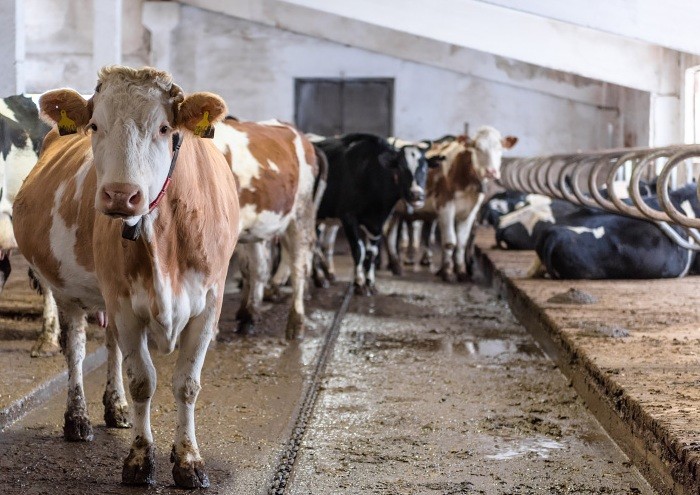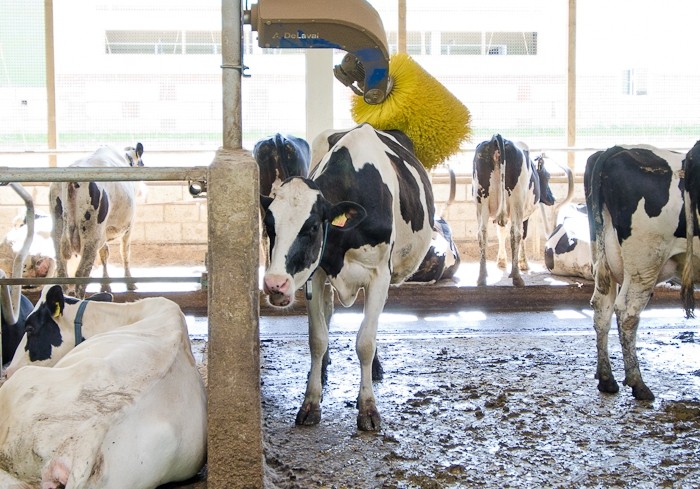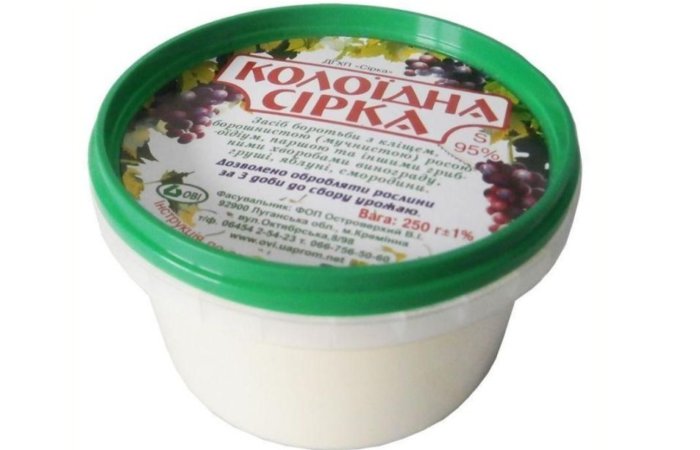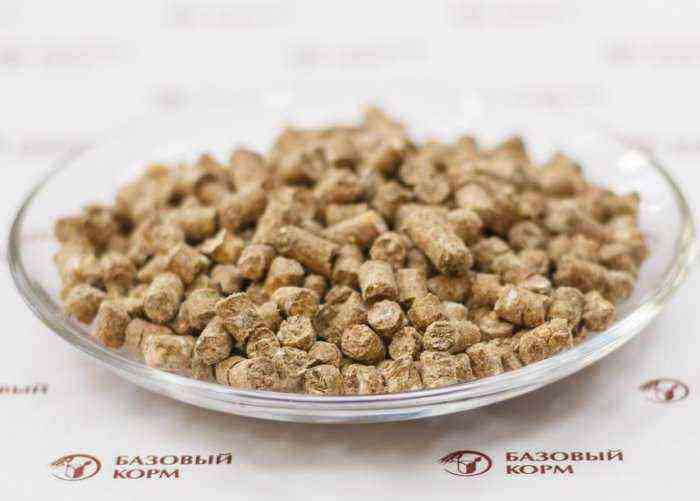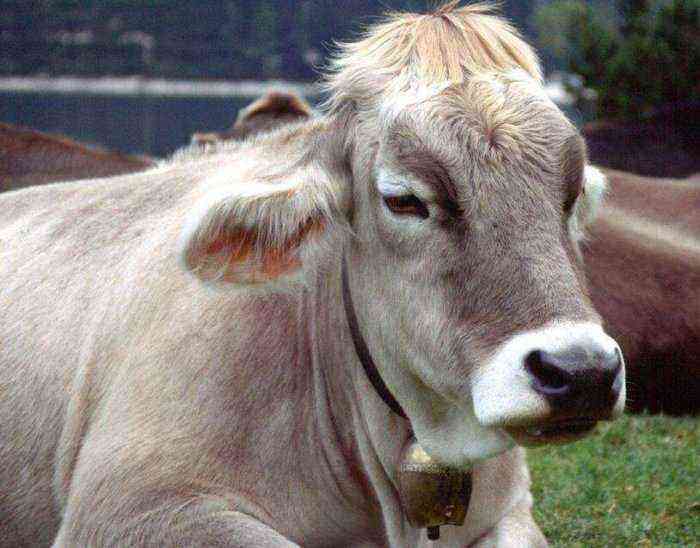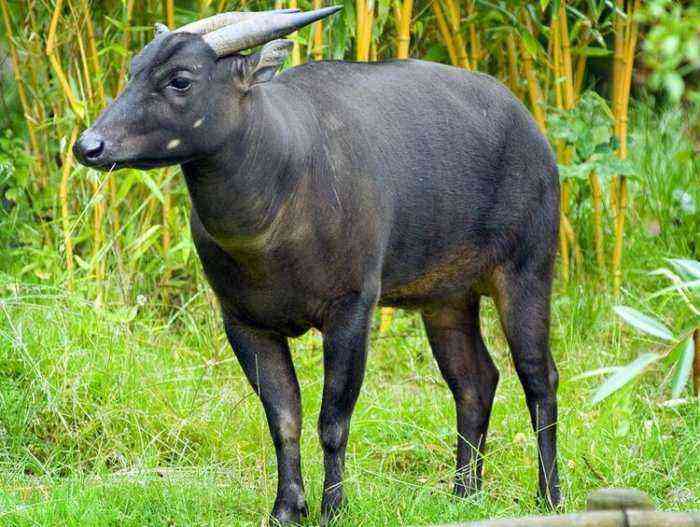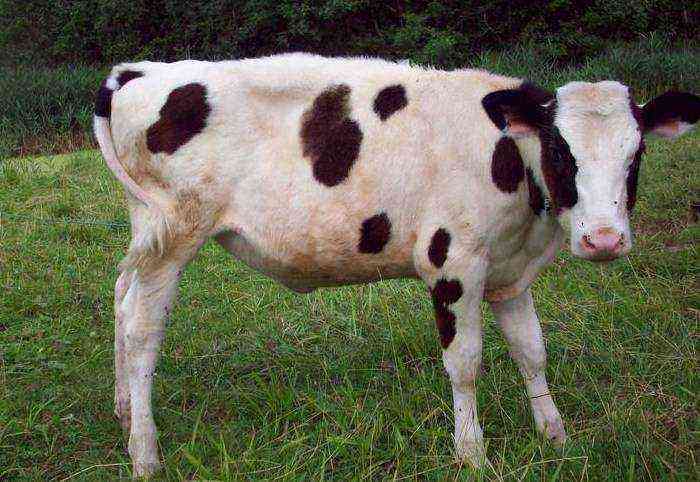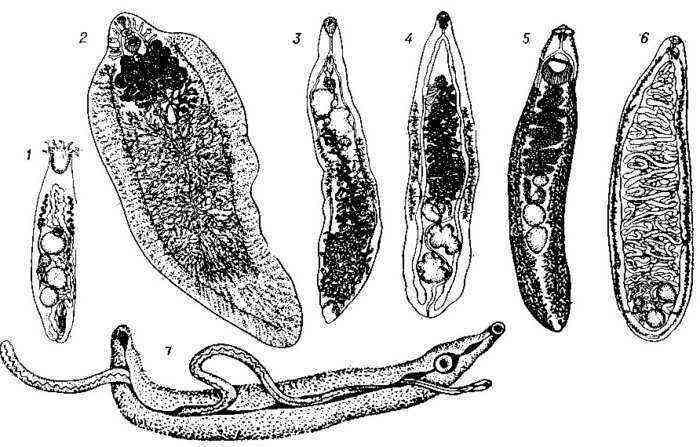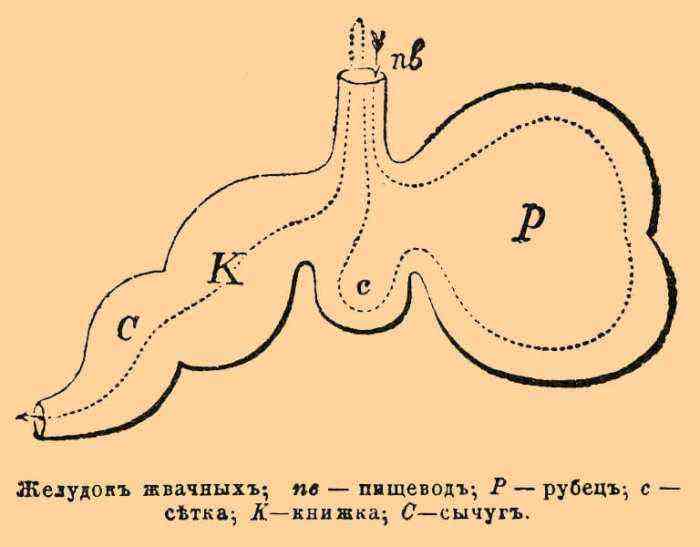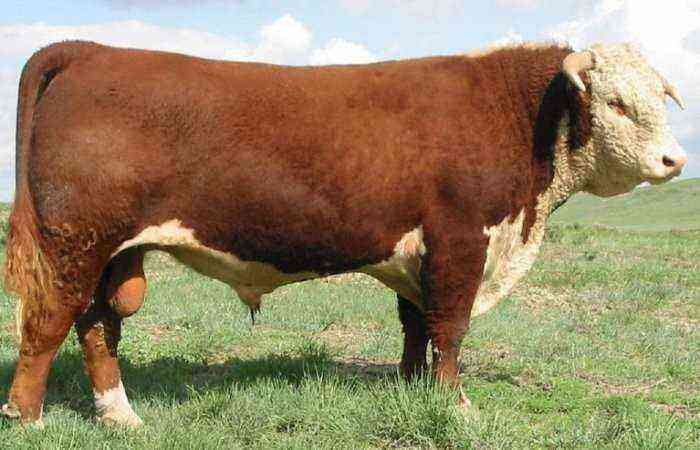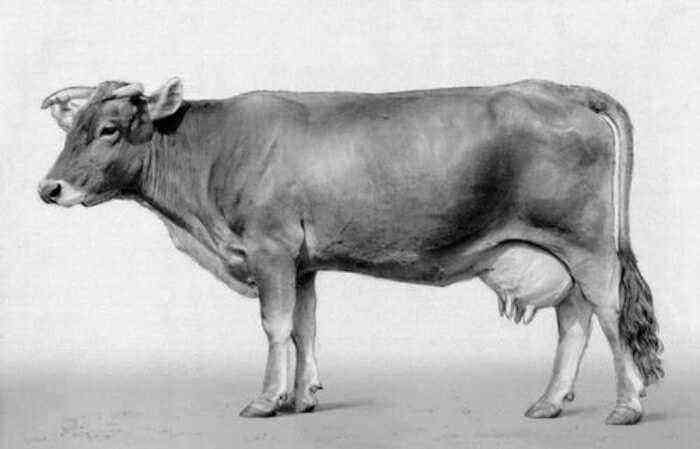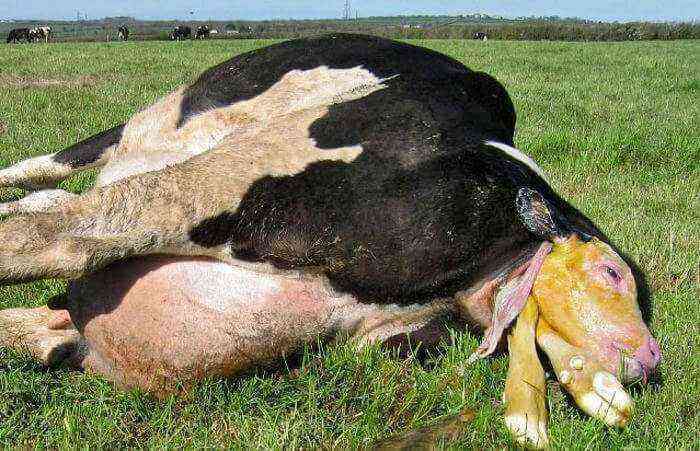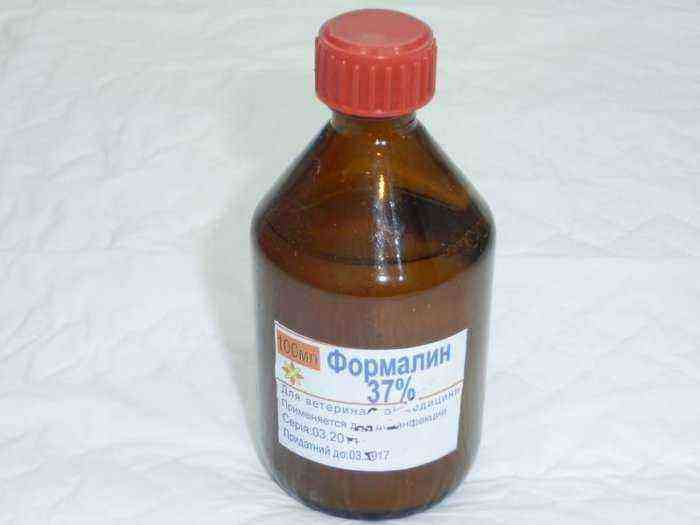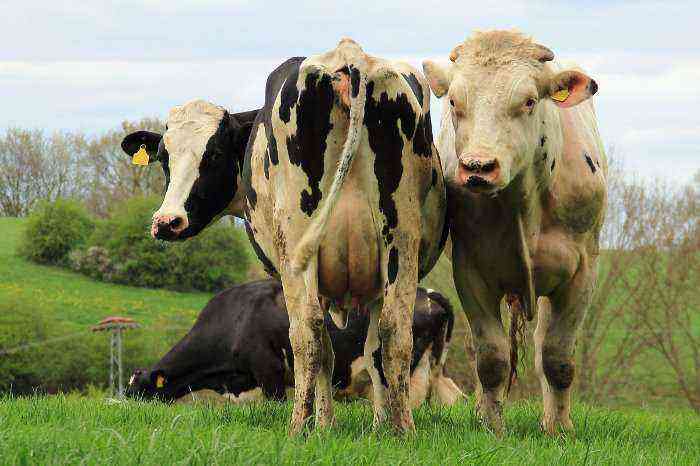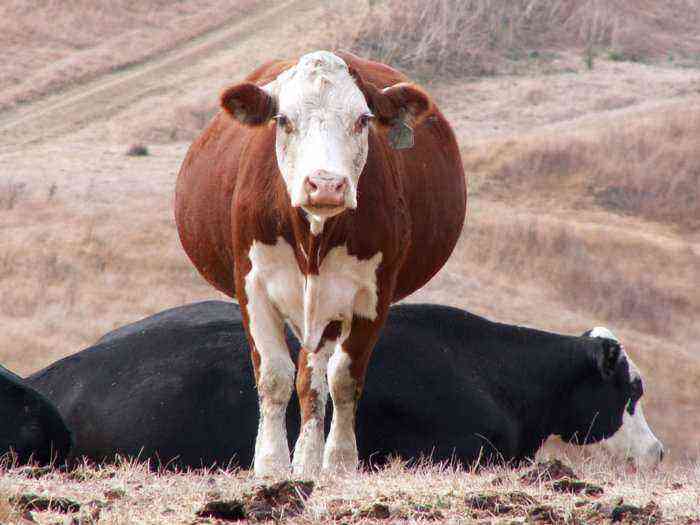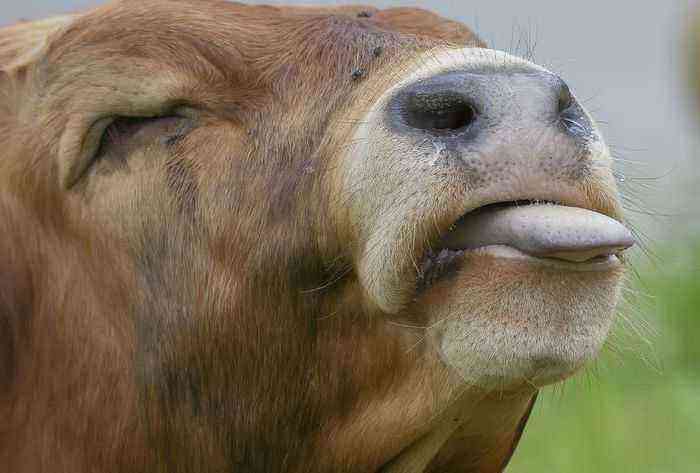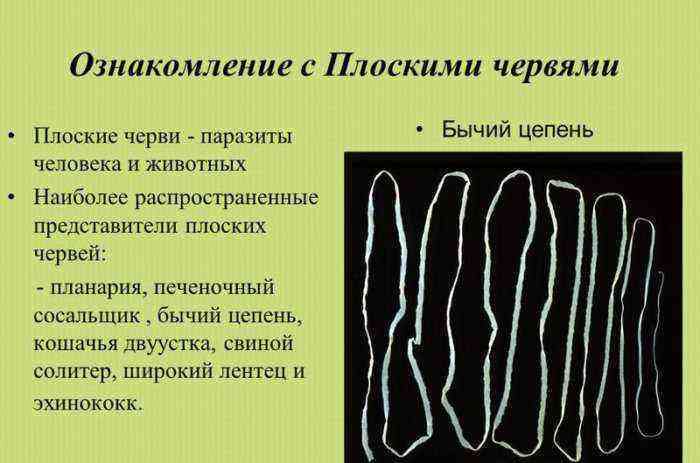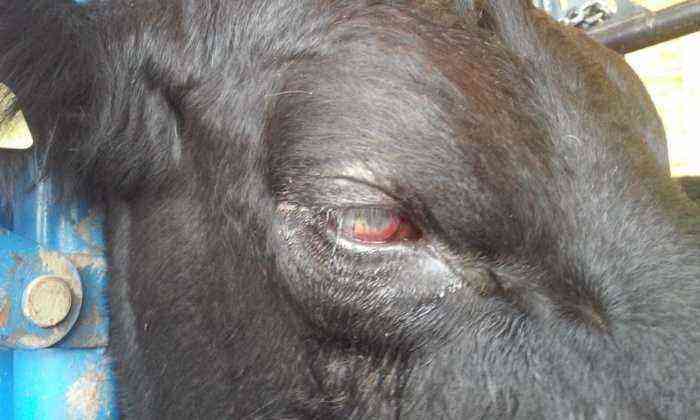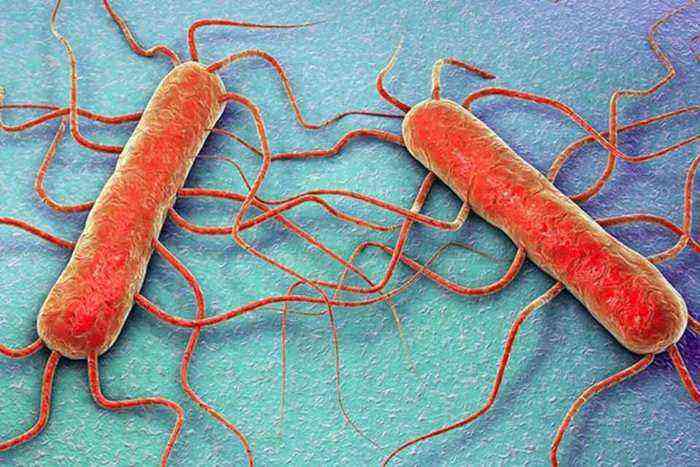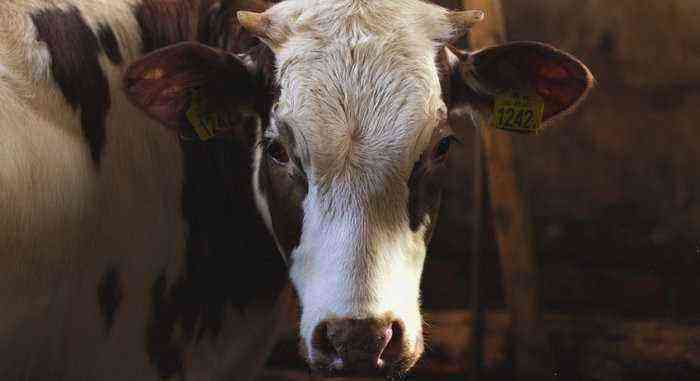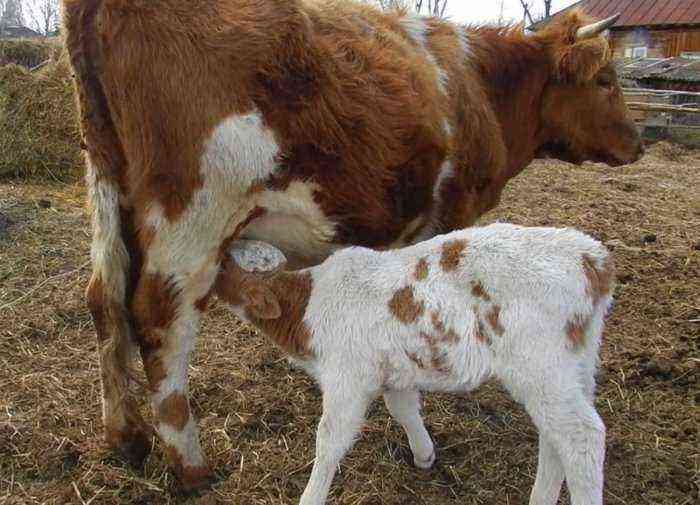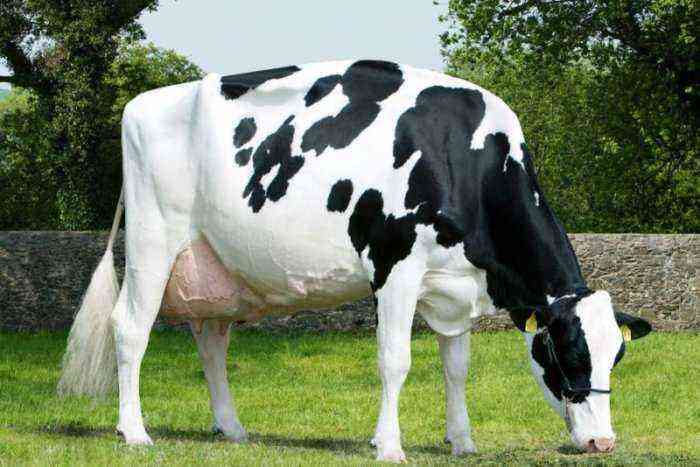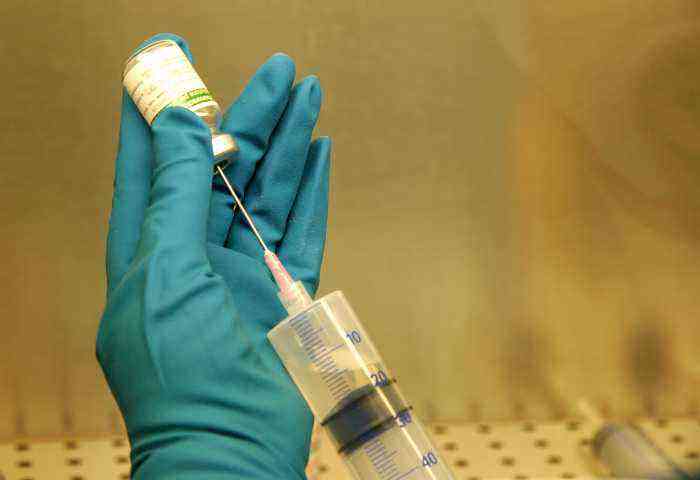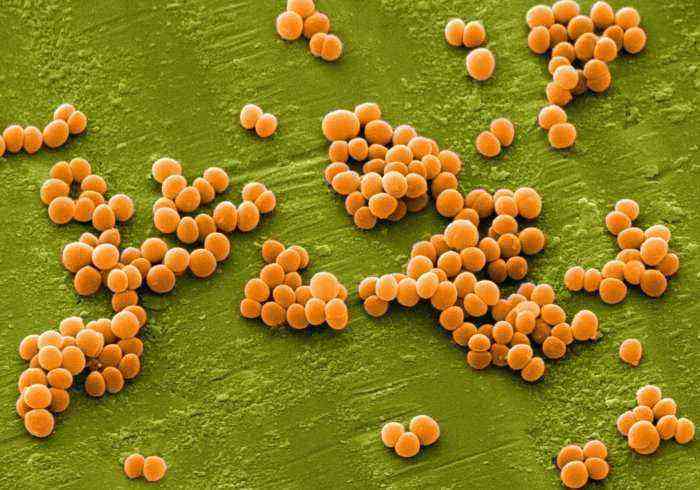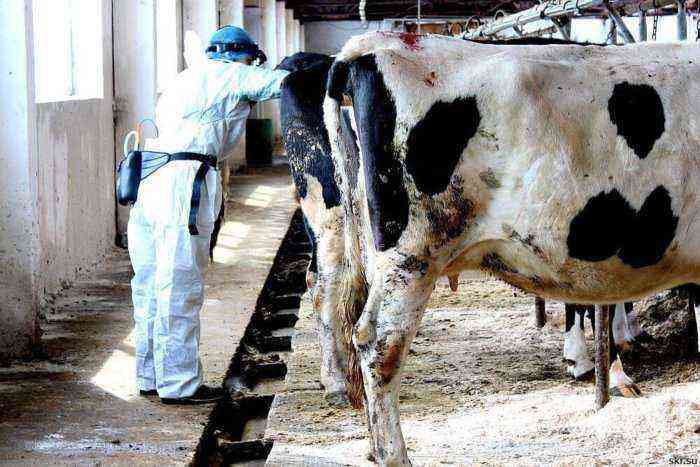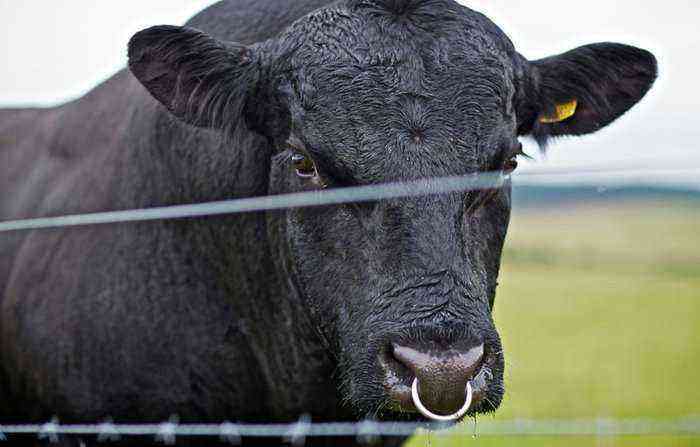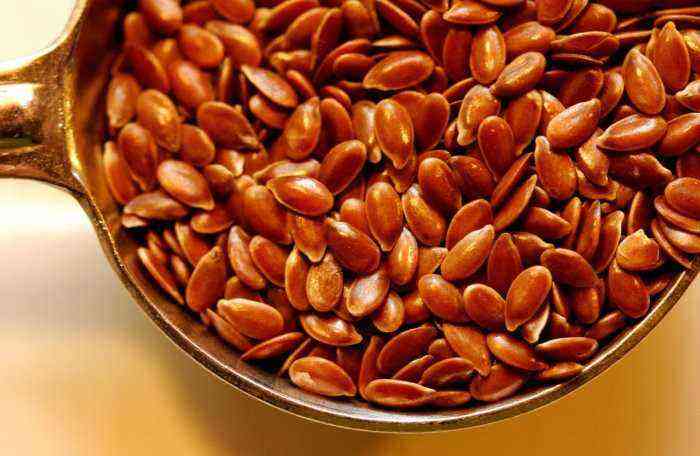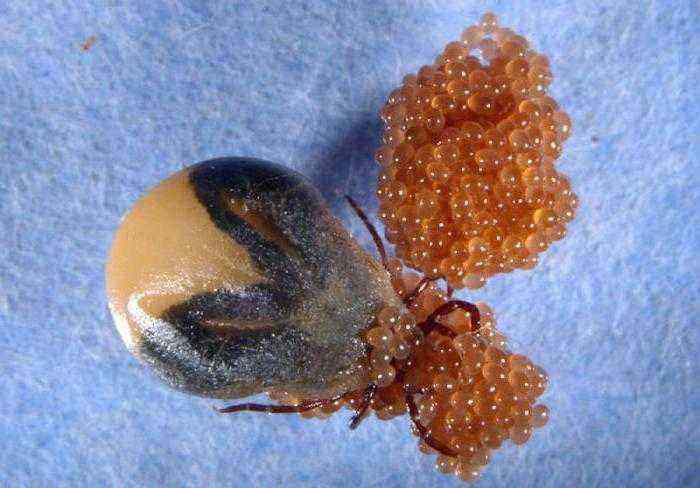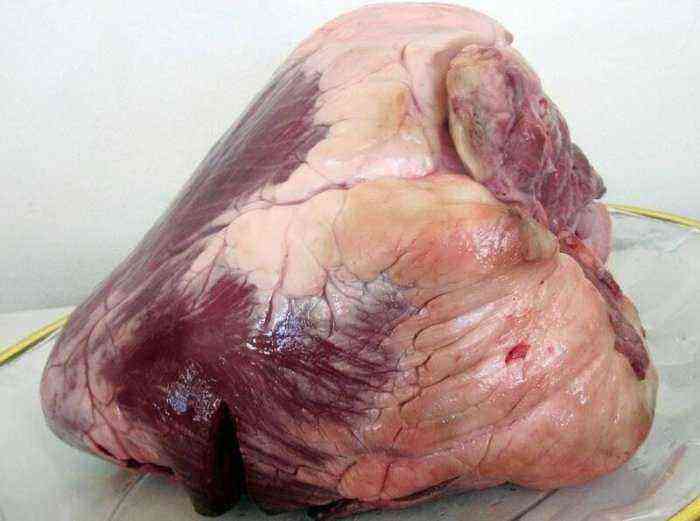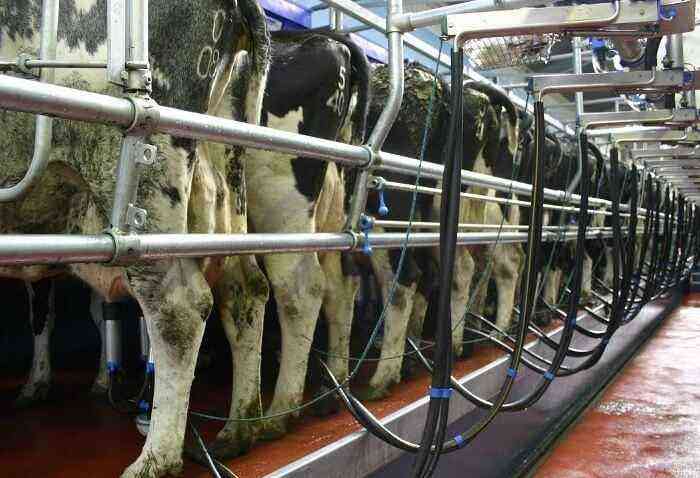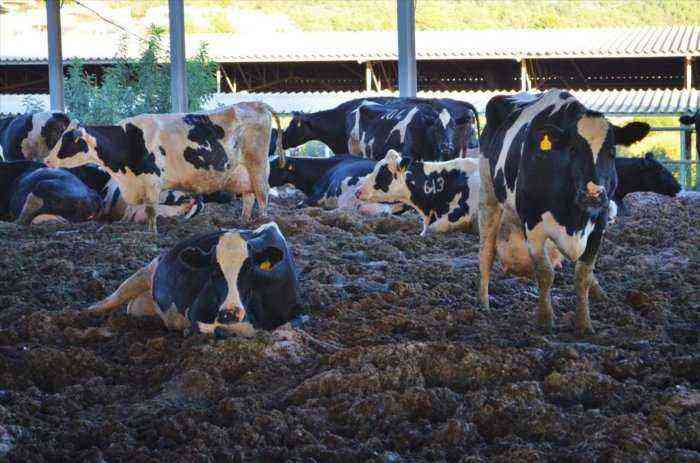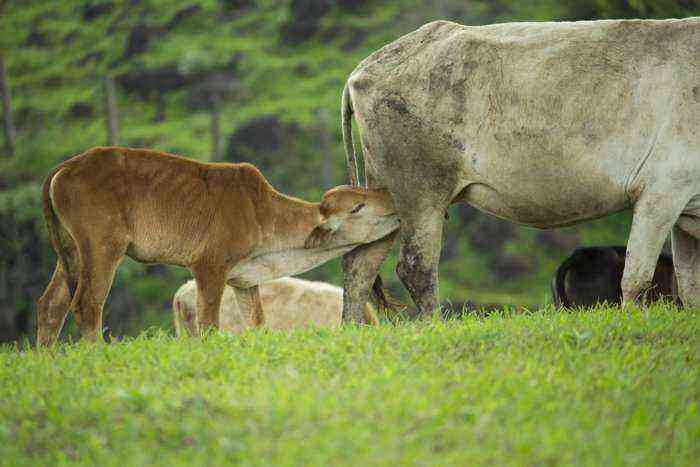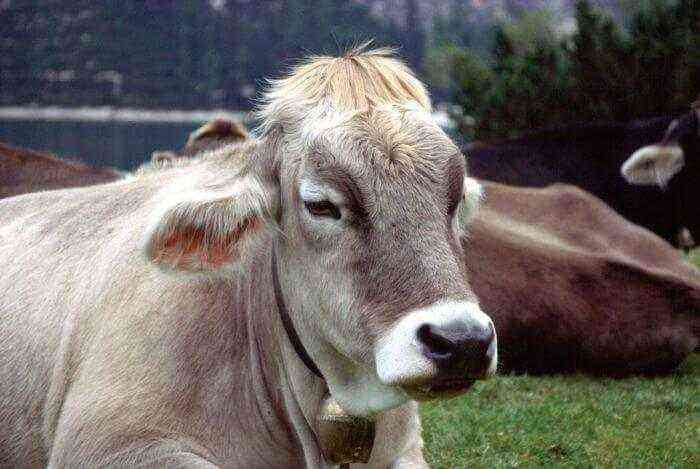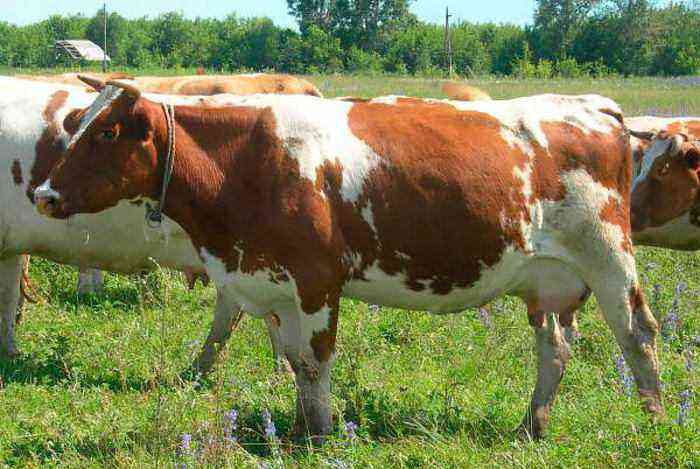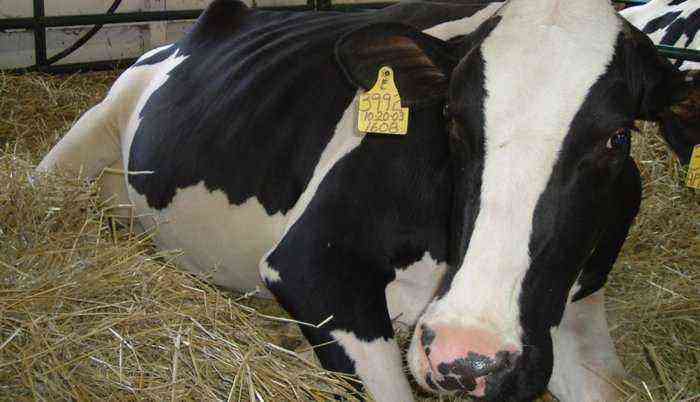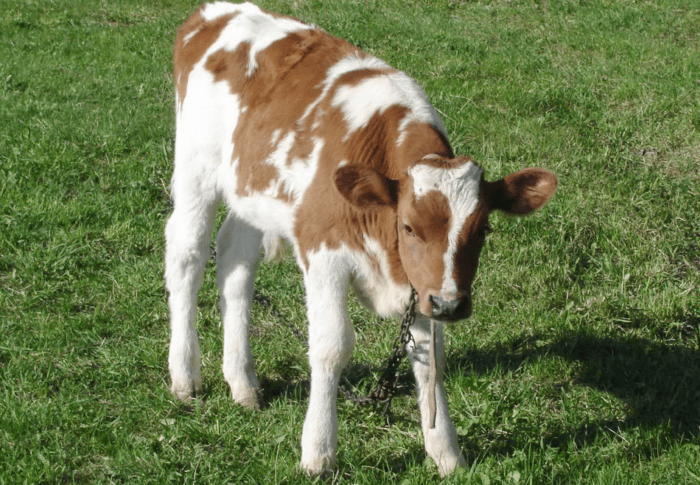Cattle psoroptosis is a disease of the skin of a cow, as a result of which inflammatory processes on the skin, baldness, weight loss and a number of other undesirable consequences can be traced in the animal. Therefore, it is important to know how to detect this disease in a timely manner and how to deal with it.
Psoroptosis KRS
Causes of appearance
The causative agent of psoroptosis in cows is a special type of tick called Psoroptes bovis. This organism parasitizes on the upper ball of the epithelium, feeding on lymph and intracellular juice there. At the same time, this parasite does not imply intermediate hosts, and all stages of its development take place on the skin of cattle, for which it received the name kozhnik.
The source of infection of healthy animals with psoroptosis are sick individuals. Most often, infection occurs through direct contact of cows. The most favorable time for the development of a tick on the body of livestock is the period from autumn to early spring. In summer, intense sunlight and increased resistance of the cow’s body do not contribute to the development of the parasite.
Reference. In the absence of medical measures, with the onset of heat, ticks can hide in the inguinal region of the animal, under the tail and in other places with minimal access to light. At the same time, with the onset of cold snaps, the microorganism becomes active again and the symptoms of the disease return.
Some aspects of the content also contribute to the spread and development of the disease:
- Bored loose content. With this breeding system, sick and healthy animals are kept in close contact, which is the main condition for the transmission of the disease.
- Use of deep non-replaceable bedding. For a certain time, the tick is able to live in such flooring and can be easily transmitted to healthy livestock.
- The use of common walking for healthy and sick animals.
- Lack of operational measures in the development of dermatoses and lice in animals on the farm. Such skin problems increase the survival rate of the parasite.
Clumsy loose content
In addition to the contact method of transmission of the pathogen between livestock, the tick can also be transmitted between cows:
- through animal care items and a stall cleaning tool;
- along with footwear and clothing for service personnel;
- when grazing on common pastures, where the parasite is introduced from livestock from other farms;
- through common drinkers or feeders, in which the causative agent of psoroptosis can live for some more time.
It should be noted that cattle under the age of 2 years are infected with ticks much more often than adults. At the same time, calves endure the disease especially hard. Those animals whose body is weakened by some primary disease are also more susceptible to infection. Of great importance is the nature of feeding cattle. If the diet is balanced and the animal is above average in fatness, it is less susceptible to ticks. If the cow’s nutrition is poor, the survival of the parasite is more likely.
Evidence
The first symptoms of psoroptosis appear after the end of the incubation period. At this time, the tick actively multiplies on the skin. Moreover, the duration of the incubation period directly depends on the general condition of the cow, the characteristics of her skin, the resistance of the body, the time of year. On average, it takes from 10 to 45 days.
The spread of the tick throughout the body begins, as a rule, from the region of the sacrum, the base of the tail and horns. With the development of larger foci of the disease, pronounced clinical signs appear, which include:
- severe itching;
- hair loss in the primary foci of the disease, which occurs gradually, starting from the center;
- the appearance of a continuous crust over the affected area of the skin, which occurs due to the drying of the released exudate;
- dry skin;
- with the development of the disease, the skin becomes rough and becomes covered with folds;
- the merging of individual areas of damage into one common.
The last moment suggests the appearance of continuous extensive hairless areas of the skin. They can occur on almost any part of the body, except for the scrotum, peritoneum, and muzzle.
Itching in cows
It is worth noting that itching begins even before the end of the incubation period. In this case, the animal tries to comb and lick the places where the tick is located. In addition, as a result of such activity, the papules that appear on the skin burst, and light discharge comes out of them. In the future, they dry out in the form of crumbs on the cow’s fur.
In addition to the acute form of the disease, subacute is also often observed. In this case, almost the same symptoms appear, only there is no itching. Most often, it appears as hairless folds on the neck, the thickness of which is from 1,5 to 3 cm. Such formations are rough and dry to the touch.
In parallel with the defeat of the skin of the cow, she also develops a general weakening, a decrease in the functionality of immune mechanisms. Young animals show a gradual weight loss. As a consequence, secondary diseases often occur that further weaken the animal and may lead to its death.
Important! In cattle, psoroptosis infestation can develop over several years. Therefore, when the first symptoms of the disease occur, measures should be taken immediately to eliminate it.
Diagnostics
The detection of psoraptosis in cattle is based on the analysis of clinical signs of the disease and the study of skin scrapings. In the second case, the material taken is studied in the laboratory by the vital or mortal method. Under a microscope or magnifying glass with high magnification, it is possible to identify the pathogen.
It should be noted that there are quite a few other diseases of the skin of cattle, which at various stages of development can repeat the symptoms of psoraptosis. Therefore, it is extremely important to carry out differential diagnostics, which makes it possible to exclude dermatitis, trichodecosis, eczema and a number of other diseases.
Treatment
After establishing an accurate diagnosis, they immediately proceed to the treatment of the disease. First of all, in this case, ordinary dust is used. It can significantly slow down the reproduction and development of ticks, as well as disrupt their vital processes. For the treatment of one cow, at least 300 g of the substance is used.
A good effect in the fight against Psoroptes bovis also gives a solution of colloidal sulfur (2%). It is sprayed on the skin of an animal. Moreover, the procedure is carried out twice with an interval of 1-2 weeks. As a replacement, ready-made spray preparations can be used, the most famous of which are Thiovit and Kosan.
Colloidal sulfur solution (2%)
Isofen is also an effective drug in the fight against ticks. It is diluted in water with a concentration of not more than 0,1%. Next, the resulting suspension is treated with the affected areas of the cow’s body. Each animal takes at least 2 liters.
In cases where the affected areas of the body have already become covered with coarse thick folds and crusts, they are preliminarily softened to enhance the effect of therapeutic measures. To do this, 3 days before the intended application of drugs, areas of altered skin begin to be regularly treated with soapy water or various oils. As soon as the keratinized ball softens a little, it is carefully removed with a blunt knife.
Especially carefully should be carried out the treatment of lactating cows. For their processing, you need to choose products that have a slightly pronounced odor. Otherwise, the productivity of the animal and the quality of milk can be significantly reduced.
Also, it is worth remembering that after treating a cow with one of these drugs, you should wait at least 15 days before slaughtering it. It is during this time that all harmful substances are removed from the meat of livestock.
The treatment is considered successful if no cases of the disease were detected during the next winter.
Prevention
As for effective measures to prevent the development of psoroptosis in personal subsidiary plots and on large farms, they are implemented at such moments:
- Compliance with sanitary and veterinary conditions for keeping animals. This includes the arrangement of livestock buildings, regular cleaning of stalls, paddocks, feeders. Also important is the lack of crowded content.
- Organization of a balanced diet. The diet should include not only high-quality fresh food, but also the optimal ratio of different types of food.
- Exclusion of the possibility of animals entering the farm from other farms, especially if they are dysfunctional.
- Prevention of infection to the healthy part of the herd from employees who work with sick animals.
- Prevention of grazing of animals on the generally accepted ways of driving livestock. In the process of moving sick animals, a large number of various pathogens can be released into the external environment, which can later become a source of disease in healthy individuals.
- Regular disinfection of premises, equipment and staff clothing.
- Timely isolation of cattle suspected of having psoroptosis.
Conclusion
The listed therapeutic and preventive measures will help to maintain the health of livestock and its productivity. It should be noted right away that although such a disease is not among the most dangerous, the consequences of its development can bring a lot of trouble.
